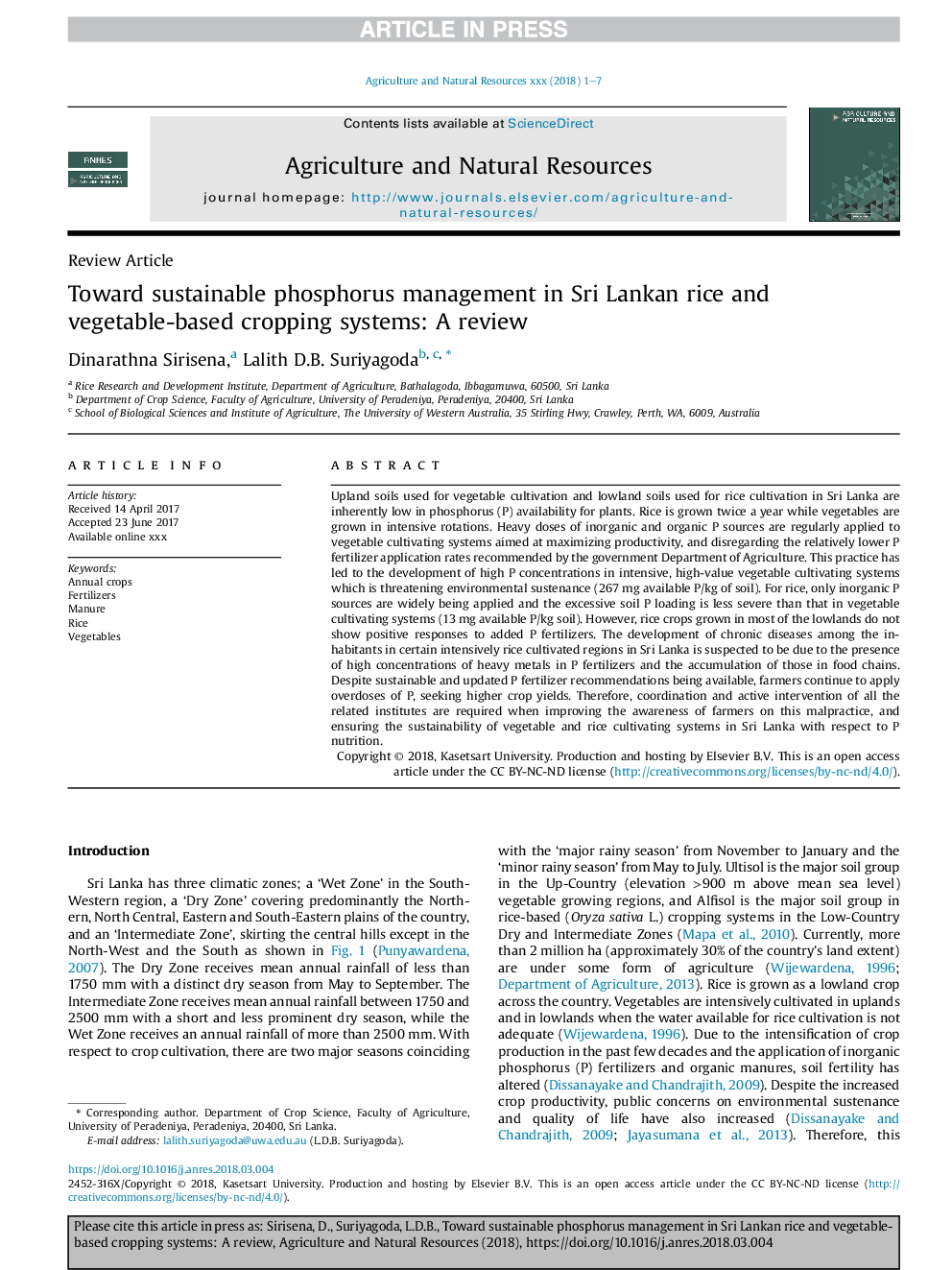| Article ID | Journal | Published Year | Pages | File Type |
|---|---|---|---|---|
| 6538016 | Agriculture and Natural Resources | 2018 | 7 Pages |
Abstract
Upland soils used for vegetable cultivation and lowland soils used for rice cultivation in Sri Lanka are inherently low in phosphorus (P) availability for plants. Rice is grown twice a year while vegetables are grown in intensive rotations. Heavy doses of inorganic and organic P sources are regularly applied to vegetable cultivating systems aimed at maximizing productivity, and disregarding the relatively lower P fertilizer application rates recommended by the government Department of Agriculture. This practice has led to the development of high P concentrations in intensive, high-value vegetable cultivating systems which is threatening environmental sustenance (267Â mg available P/kg of soil). For rice, only inorganic P sources are widely being applied and the excessive soil P loading is less severe than that in vegetable cultivating systems (13Â mg available P/kg soil). However, rice crops grown in most of the lowlands do not show positive responses to added P fertilizers. The development of chronic diseases among the inhabitants in certain intensively rice cultivated regions in Sri Lanka is suspected to be due to the presence of high concentrations of heavy metals in P fertilizers and the accumulation of those in food chains. Despite sustainable and updated P fertilizer recommendations being available, farmers continue to apply overdoses of P, seeking higher crop yields. Therefore, coordination and active intervention of all the related institutes are required when improving the awareness of farmers on this malpractice, and ensuring the sustainability of vegetable and rice cultivating systems in Sri Lanka with respect to P nutrition.
Related Topics
Life Sciences
Agricultural and Biological Sciences
Forestry
Authors
Dinarathna Sirisena, Lalith D.B. Suriyagoda,
